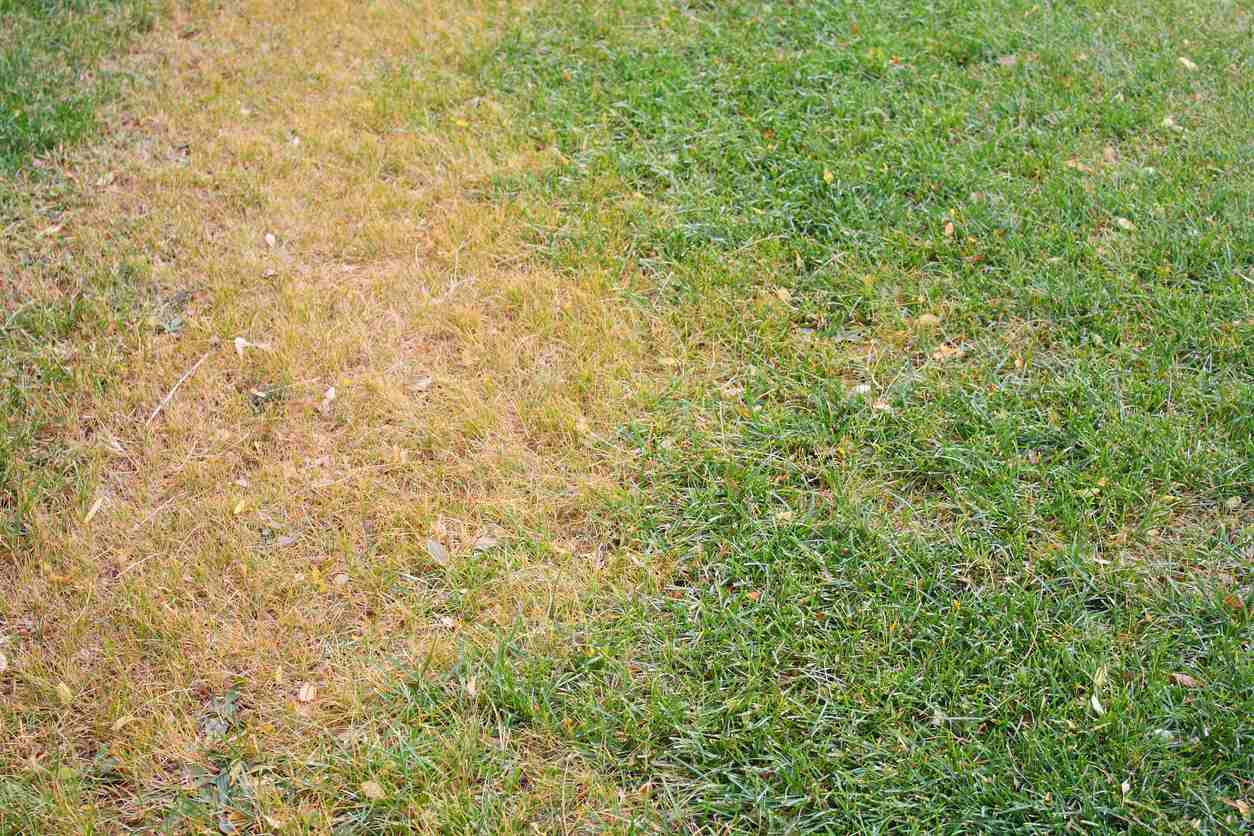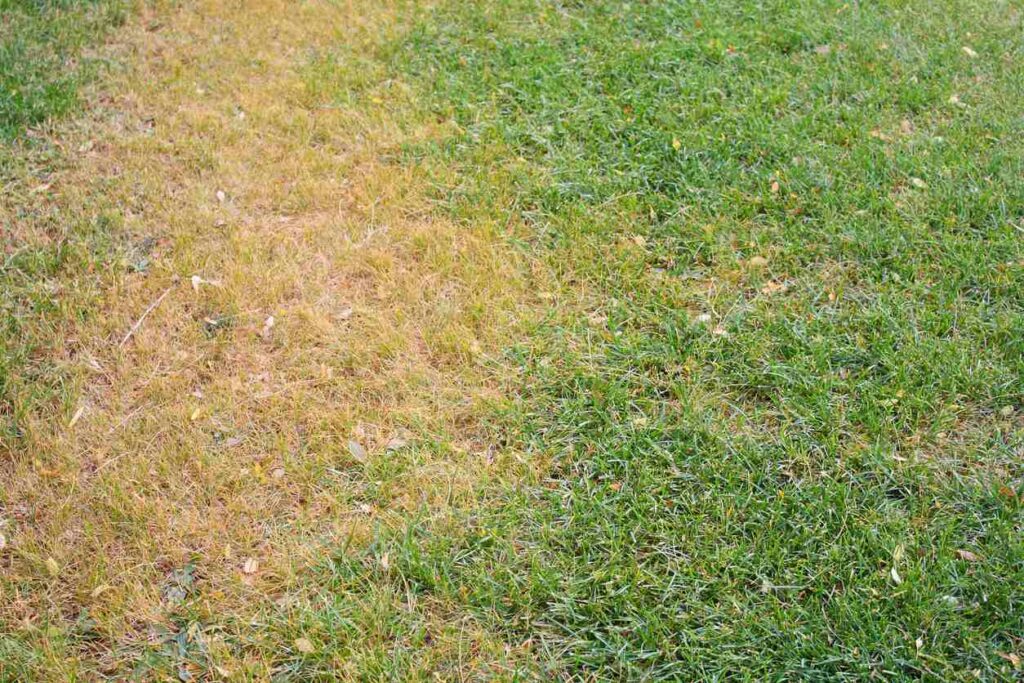Yellow Lawn Problems – How To Fix Your Yellow Lawn
In summer or winter, yellow lawn problems seem to snowball regardless of the weather. It’s true, lawn issues are for some reason associated with hot weather. But as we’ll see, yellow lawn problems can be the result of diverse causes both chemical and biological. When your lawn care and practices are not up to snuff, your lawn will reflect that for all to see.
But sometimes the yellow spots and sickly grass has little to do with your maintenance and more to do with soil structure, fertilizing or lack thereof, or even inadequate watering habits. Since your lawn impacts your curb appeal and the value of your property, you’d want your lawn to look its best all the time. So how do you achieve that? And how would you go about identifying yellow lawn problems and fixing them? Read on to find the answers to all of these questions.
Yellow Lawn Problems
When the grass in your lawn turns yellow, that can be a head-scratcher. The reasons vary but the symptoms are apparently always the same. Your perfect lawn is not long looking immaculate. Yellow batches dot the lush green landscape and you have to find the cause of it and fix it to reclaim your beautiful lawn once again. The common causes of yellow lawn problems include the following.
Compact Soil
They call it a rookie mistake when you sow your grass seeds in untested soil. More often than not your grass loves loose and well-drained soil. The root system of the grass is usually shallow and close to the surface. So compact soil will make it hard for the roots to penetrate the soil and get the moisture and nutrition the grass needs. If your grass has turned yellow, check the soil in your lawn. If the soil is gray and hard, that might be the reason the grass is malnourished and looking yellow.
Another sign that your soil is too compact for your grass is when you water it, the water stays on the surface for too long. If you notice the water sliding off the high ground and pooling in low areas in your lawn, that means that the soil doesn’t absorb water well enough. Both overwatering and heavy foot traffic can make the soil compact. Too much thatch also impacts the quality and texture of the soil.
Inadequate Watering
The irony with lawn care is that both overwatering and underwatering can cause the grass to turn yellow. You have to get your watering just right to keep the grass growing lush green and avoid the dreaded yellow lawn look. If you give the lawn too much water than it needs, it weakens the shallow roots of the grass which deprives the grass of much-needed nutrition.
At the same time, a lack of water has the same effect. The roots need moisture to absorb the nutrition in the soil. So either way, the grass looks weak, sickly, and yellow.
Heat
In the summer months, the temperature rises drastically which dries out the soil faster than the roots can absorb the moisture. This often happens if you tend to water your lawn (or turn the sprinkler on) at high noon. Grass becomes malnourished and loses its lush green color as a result of the dry soil. Even a couple of hot days could have that effect on your lawn leaving yellow batches all over it.
Frost
Believe it or not, frost can also cause your yellow lawn problem. Frost is the result of the temperature of the soil dropping below the temperature of the air near it. The moisture in the soil then freezes over making it hard for the shallow roots of the grass to function properly. Frost damage can affect large batches of the lawn where the grass blades turn yellow or even brown. What makes frost even a more serious problem is that you can’t really do much about it. Once frost sets in, you just have to wait for the spring before you can remedy the damage.
Lawn Dormancy
Some types of grass are more cold-tolerant than others. Fine fescue grass for example handles low temperatures rather well. But most grass varieties tend not to do well in frosty conditions. As a defense mechanism, the grass will just go dormant. It’s like a state of hibernation where the grass will hardly show any signs of growth. Lawn dormancy also takes place during other harsh conditions such as drought. This can go on for about 3 weeks without damaging the grass. Once the conditions improve, the grass will come back to life.
Fertilizer
Just like watering, your grass needs the right amount of fertilizer at adequate times. Too much fertilizer, especially an overload of nitrogen, can give you yellow lawn problems. Remember what we said about the shallow root system of the grass? It turns out that these roots are sensitive to high doses of nitrogen and get burned easily. Experts recommend you use a diluted form of liquid fertilizer to prevent root burning. You can also use custom fertilizer such as 3-10-10 that’s low on nitrogen.
Biological Causes of Yellow Lawn
In addition to the above causes, sometimes your lawn will have problems because of pests, diseases, or some other issue that affects the soil. The most common biological causes of yellow lawn are the following.
Pests
Certain bugs and grubs live in the soil and feed on the roots of the grass. If you check the soil where the grass has become pale and sickly, you might find any one of the following pests.
- White Grubs: They usually attack the roots of the grass in the late summer and early fall. The yellow batches are a dead giveaway of where they lie under the surface.
- Billbugs: These voracious bugs not only attack the roots but also feed on the leaves and stems of the grass. They appear in the mid-summer and when they’re done, your lawn will have more brown and black batches than green ones.
- Cranberry Grider: Another bug that feeds on the roots in the late summer and early fall. The center of the yellow batches this bug creates is usually dead and you will have to reseed it.
One telltale sign that you have a grub problem is when you pull the grass and it comes off easily in your hand. That implies that the roots of the grass are dead and you might have to reseed the infected areas.
Fungus
When you can’t find grubs under the surface of the soil, maybe it’s a fungus that is killing the roots of the grass. The two most common types of fungus that attack lawn grass are
- Ascochyta: Changes in temperature often cause this fungus to spread. It often attacks the leaves and causes uneven yellow batches. This often happens after a rain spell followed by hot weather. It only impacts the top of the grass so aerating the lawn usually takes care of the problem.
- Necrotic Ring: One of the most difficult fungal infections to get rid of. The fungus causes rings of yellow grass in your lawn and can stay in the soil for up to three years. You’ll often need to reseed that infected batches once the fungus has dissipated.
Pet Urine
Pets like to relieve themselves on the grass. Unfortunately, your dog or cat urine contains high concentrations of nitrogen. As we have seen before, nitrogen has adverse effects on the roots of the grass. If you notice scattered spots of yellow grass on the lawn, it might be the result of pet urine. Knowing dogs, these spots will usually be near borders and trees.
Gasoline
Gasoline can spill over the grass in different ways. If you fix your car and empty the tank, some fuel might find its way to the lawn where it will kill the grass. This also happens if you fuel your lawn mower and spill some on the grass.
Yellow Lawn Fixes
Some of the problems discussed above have easy solutions while others require drastic measures and reseeding the lawn. Here are some of the common yellow lawn fixes.
Adequate Watering
As we have seen, too much water has the same impact on the grass as too little water. A good rule of thumb is to let the top two inches of the soil go dry before you water the lawn. You should also adjust the amount of water to the grass variety you have on the lawn. During the summer months, you might have to irrigate the grass between 2 to 3 times a week. But that varies depending on the grass type.
Reseed Urine Patches
Since nitrogen in high doses burns the roots of the grass, the only solution to pet urine spots is to reseed those infected patches. Before you do that, you’ll have to remove the soil in that area and replace it with clean and fertile soil.
Mowing
This might come as a surprise to you, but blunt mower blades increase the problem of a yellow lawn. The explanation is simple. Blunt blades don’t cut off the grass leaves cleanly. Instead, they hack the leaves and spread fungal infections. Make sure the mower is sharpened before you use it and cut the grass shorter than you’re used to.
Treat Pests and Diseases
Once you’ve narrowed down the cause of the yellow lawn problem to grubs or fungal infections, then it’s a matter of finding the right fungicide. Most fungi spread in damp conditions, so always allow the soil to dry out before you water it. As for grubs and pests, you should treat them with a potent pesticide.
Tips to Prevent Yellow Lawn
Sometimes it’s not enough to fix yellow lawn problems. Proper lawn care can help prevent these problems from showing up again. Here are a few tips to help you keep your lawn in good shape.
- Make sure the surface of the lawn is level. If you have low areas, fill them up with a mixture of sand and soil to prevent water pooling down and damaging the grass.
- Choose the right grass variety for your climate and soil type.
- Test the pH levels of the soil and improve drainage using sand and perlite in the right amounts.
- Use fertilizer in the right amount and balance. Always use a mild fertilizer that’s low on nitrogen to prevent root burn.
- When mowing, ensure the blades of the mower are sharp to get a clean cut.
- Aerate the soil regularly to improve drainage and allow the water and nutrition to reach the roots faster.

